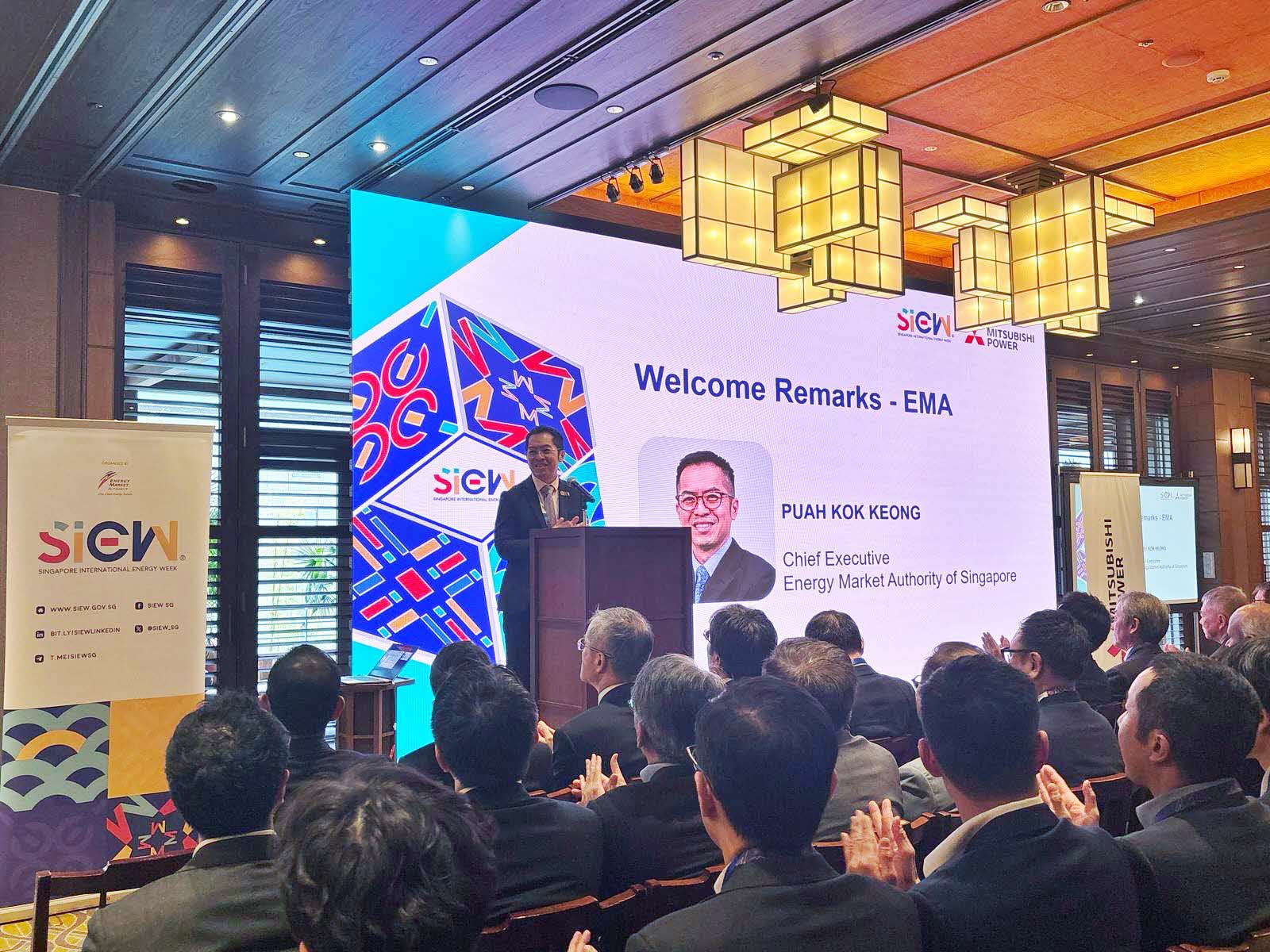
As energy demand continues to grow across Asia, regional collaboration is becoming increasingly vital. On 28 March 2025, more than 150 policymakers, industry leaders, and energy experts gathered in Japan, for SIEWConnects@Kobe.
Co-hosted by the Energy Market Authority (EMA) of Singapore and Mitsubishi Power, the event is part of a global series building momentum towards the Singapore International Energy Week (SIEW) 2025 taking place this October.
Discussions focused on practical steps to accelerate Asia Pacific's energy transition, including the role of natural gas and hydrogen to advance clean energy.
A portfolio approach to the energy transition
Mr Puah Kok Keong, Chief Executive, EMA, opened the event by highlighting the urgency of building secure, sustainable, and affordable energy systems to meet future needs. Echoing the SIEW 2025 theme, Envisioning Energy Tomorrow, Building Systems Today, he stressed the importance of collective action in shaping the energy landscape of tomorrow.
"No country can successfully navigate the energy transition alone. By working together—sharing research, developing solutions, and implementing new technologies—we can build an energy transition that works for everyone," he said.
Asia's electricity demand is expected to grow by about 5 percent annually over the next 10 years. Natural gas will continue to play a key role, with global liquefied natural gas (LNG) demand projected to grow from about 400 million tonnes in 2024 to 550 million tonnes by 2030—a 40 percent increase, according to energy consultants FGE.
Mr Puah also noted that natural gas still contributes to greenhouse gas emissions. To manage this, countries must adopt a portfolio approach. This means combining different energy sources, such as renewables and gas, to maintain reliable energy supply while transitioning towards cleaner alternatives.
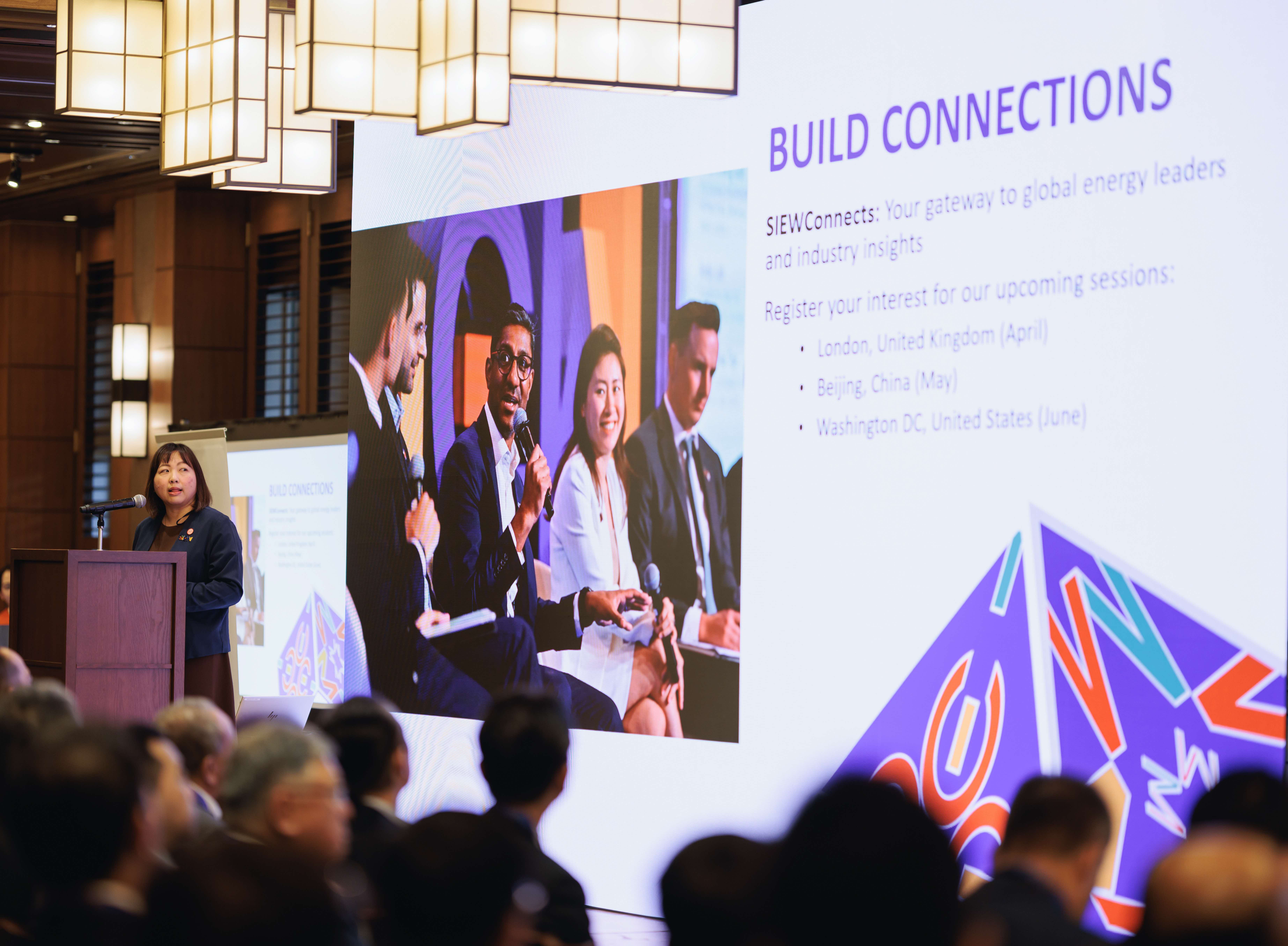
Charting the course to sustainable energy systems in Singapore
Ms Serene Chua, Deputy Director of External Relations, EMA, touched on Singapore's multi-pronged energy strategy in its path towards a sustainable future. This includes expanding and creatively deploying solar energy, as well as importing up to 6 gigawatts (GW) of low carbon electricity by 2035.
She highlighted plans to explore carbon capture, utilisation and storage (CCUS), and low carbon alternatives such as hydrogen, geothermal, and nuclear energy. She reaffirmed Singapore's net zero commitment by 2050, and shared updates on the country's progress in solar deployment, hydrogen pilots, and regional interconnectivity initiatives.
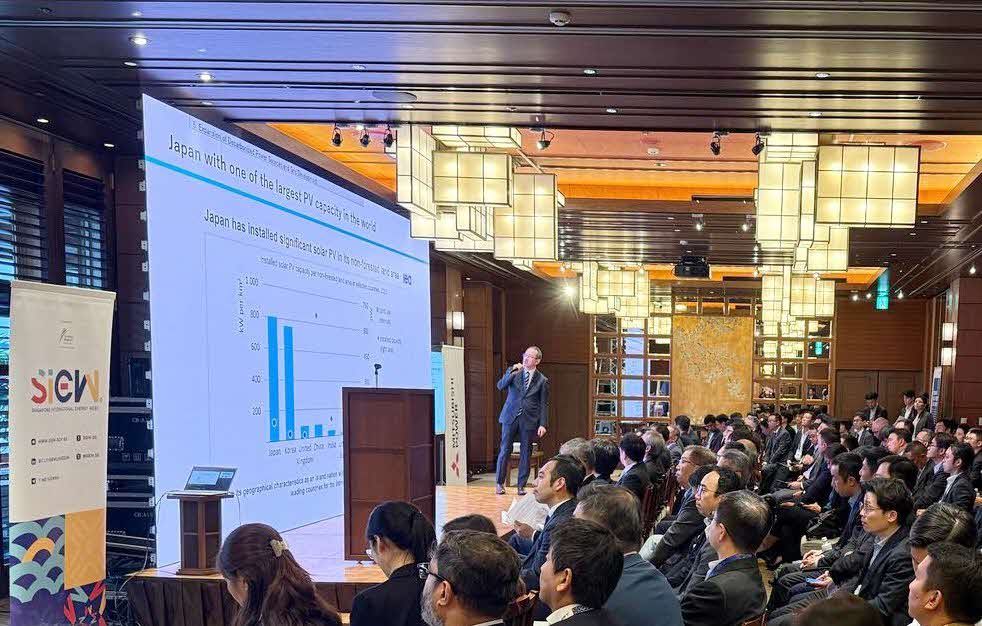
Advancing international cooperation for a low carbon future
Speakers at SIEWConnects@Kobe shed light on how Japan is reshaping its energy mix to support a more balanced and secure low carbon future. Mr Masanori Tsuruda, Deputy Commissioner for International Affairs, Agency for Natural Resources and Energy (ANRE), Ministry of Economy, Trade and Industry (METI), Japan, presented highlights from Japan's 7th Strategic Energy Plan.
The plan sets a course for increasing the use of renewables and nuclear energy, while phasing down fossil fuel-based generation. He noted that Japan is also promoting clean energy technologies such as hydrogen and ammonia co-firing as part of this strategy.
Mr Tsuruda underscored the importance of international cooperation to achieve shared goals around energy security, economic growth, CCUS, and carbon emissions reduction. Japan is currently working with 11 partner regional partners under the Asia Zero Emission Community (AZEC) initiative to drive carbon neutrality efforts across Asia.
To reinforce Japan's commitment, he revealed that the country has begun retrieving fuel debris from the bottom of the pressure vessel at the Fukushima nuclear plant. This is a key step in its long-term decommissioning and recovery efforts.
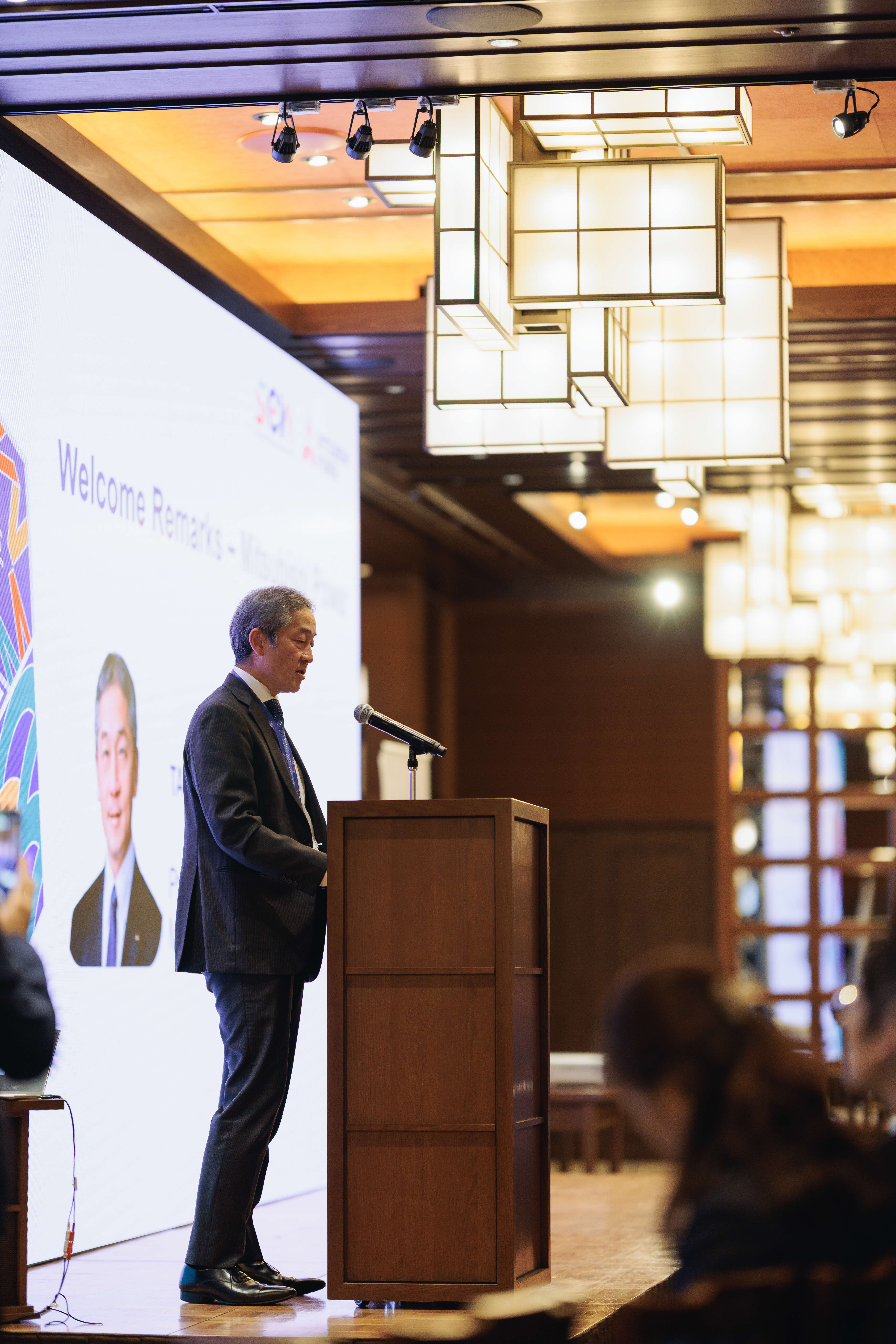
Technology and collaboration in focus
Extending the region's focus on low carbon strategies, Mitsubishi Power shared how advanced technologies can support Asia's energy needs while enabling decarbonisation.
Mr Takao Tsukui, President and CEO, Mitsubishi Power, highlighted the need for advanced, reliable solutions to support energy needs during the transition. These include gas-fired power plants that are ready for hydrogen use.
Mr Tsukui affirmed his company's commitment towards the energy transition. He shared that Mitsubishi Power is expanding its manufacturing capacity and supply chain to meet demand. The company's goal is to support countries in meeting rising energy needs while reducing their carbon footprint.
He also highlighted that scaling clean technologies requires policy support, and strong public-private partnerships, and innovation—all while ensuring energy systems remain secure and reliable.
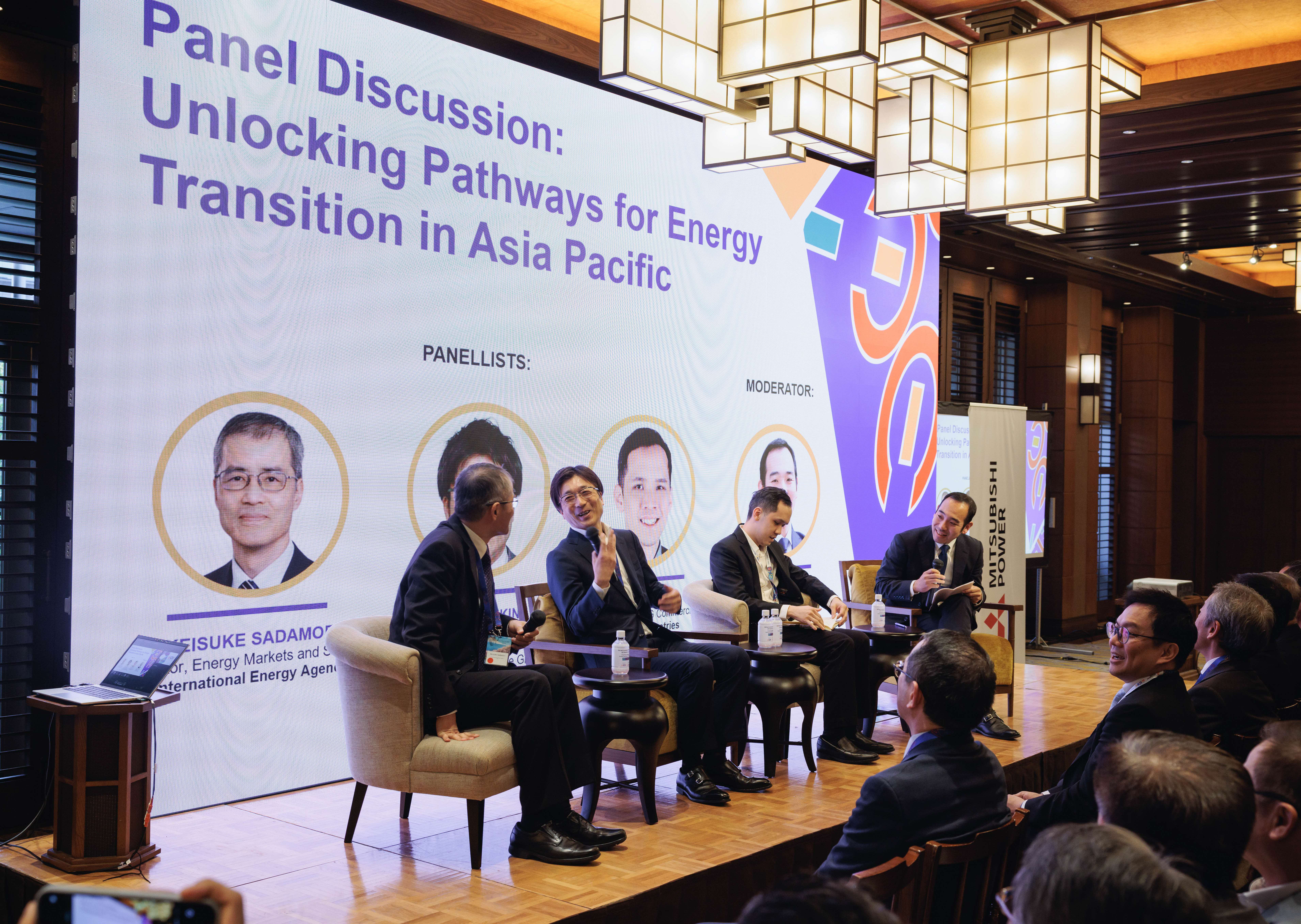
Industry perspectives on the energy transition
Following the technology deep dive, the panel discussion featured diverse perspectives from policy, finance, and industry on how to accelerate Asia's energy transition.
Moderated by Mr Masaru Tsuchiya, Partner, McKinsey & Company, the panel brought together senior representatives from the International Energy Agency (IEA), Japan Bank for International Cooperation (JBIC), and Sembcorp Industries. The speakers explored transition pathways, financial strategies, and opportunities for regional collaboration.
Mr Keisuke Sadamori, Director, Energy Markets and Security, IEA, noted that Asia accounted for about 80 percent of global coal demand last year—the highest level on record. He described natural gas as a pragmatic solution to reduce fossil fuel use, adding that LNG affordability will be a key concern for developing economies.
Mr Hiroki Sekine, Managing Executive Officer, Global Head of Infrastructure and Environment Finance Group, JBIC, described gas as a practical solution to accelerate the shift away from fossil fuels. However, he stressed that long-term projects—especially those extending beyond 2050—must align with national decarbonisation strategies in order to secure financing and community support.
Mr Vincent Lam, Head of Gas & LNG Commercial, Sembcorp, shared that customers in Singapore are increasingly seeking renewable sources and price certainty. He added that flexible, scalable contracts can support this transition. He noted the need to work with government and regional players to explore options such as power imports, or even green hydrogen and ammonia as long-term possibilities.
Throughout the discussion, the speakers emphasised the importance of collaborative, balanced approaches to the energy transition. They highlighted the need to align energy security with decarbonisation, while maintaining affordability and fostering regional cooperation. The event reinforced that regional collaboration—across governments, industries, and borders—remains essential to advancing Asia's energy transition.

From dialogue to action
Mr Masanori Yuri, Senior Fellow, Senior General Manager, GTCC Business Division of Energy Systems, Head of Takasago Machinery Works, Mitsubishi Power, closed the event by calling for action beyond the day's discussions. His remarks reflected the event's focus on turning dialogue into action—a priority that will continue at SIEW 2025.
SIEWConnects@Kobe set the stage for deeper discussions at the upcoming SIEW 2025, where global energy leaders, policymakers will continue exploring new pathways to the energy transition. Watch the full event here.
SIEW 2025 takes place from 27 to 31 October at Marina Bay Sands, Singapore. Register your interest here.